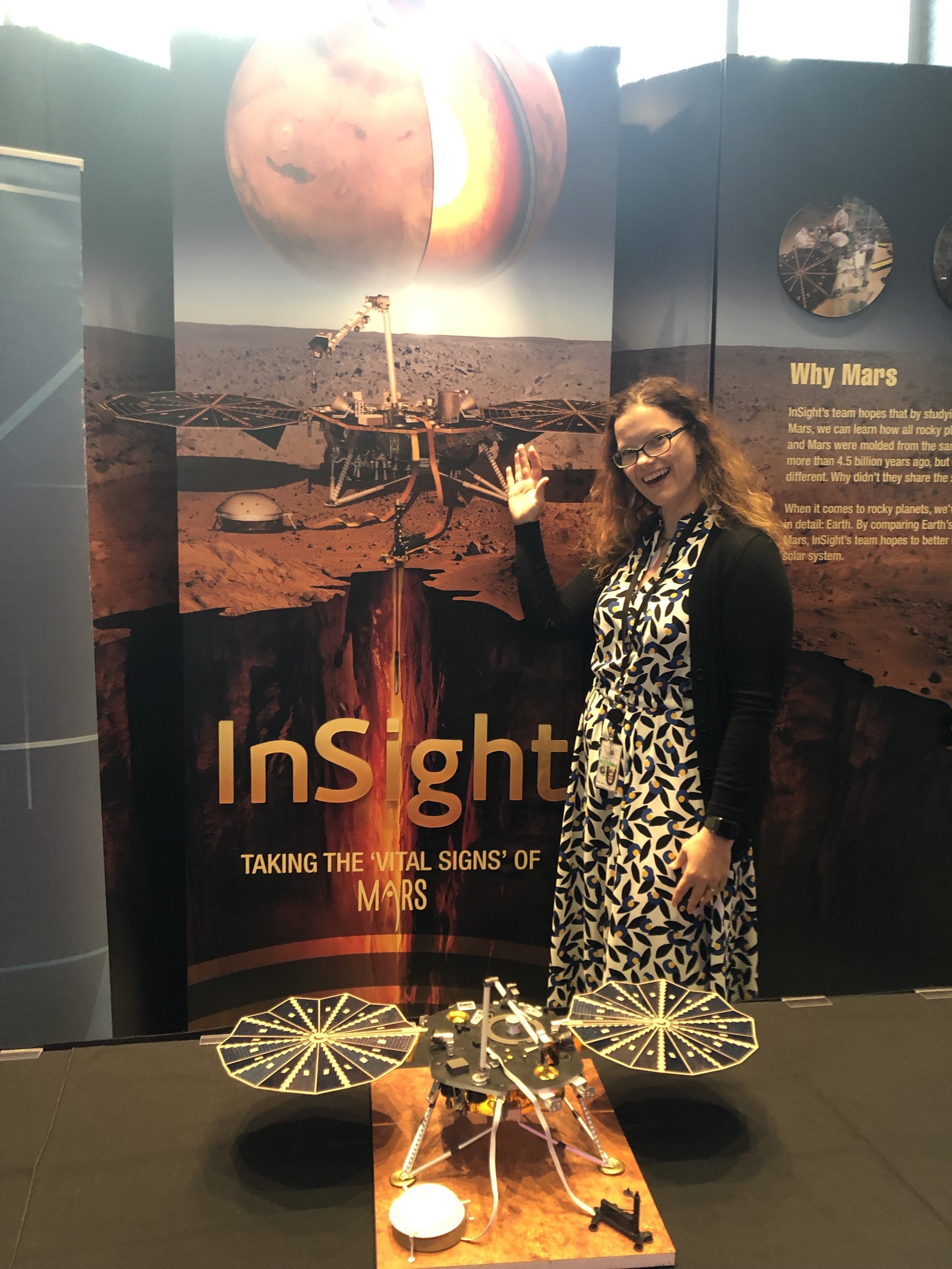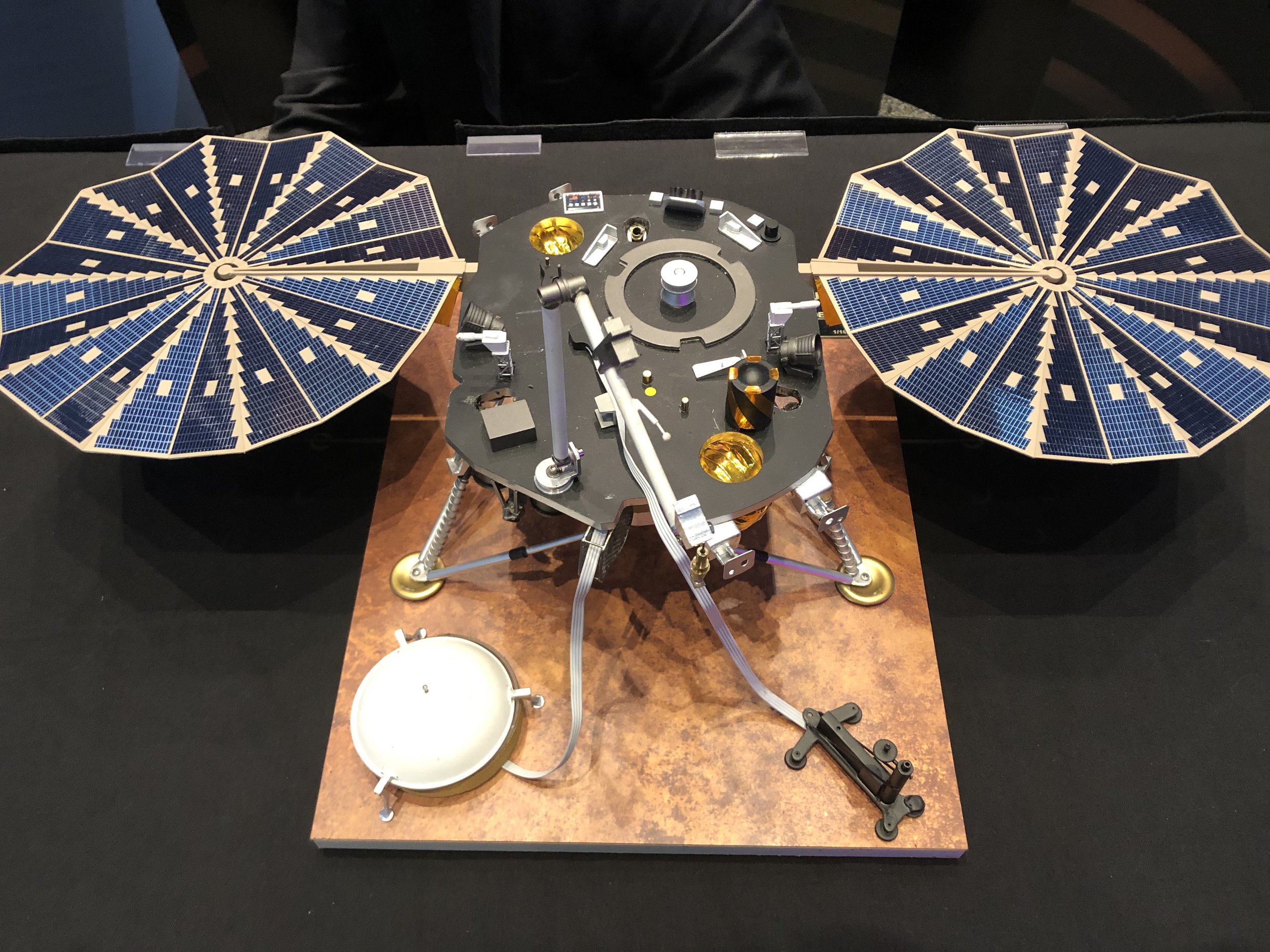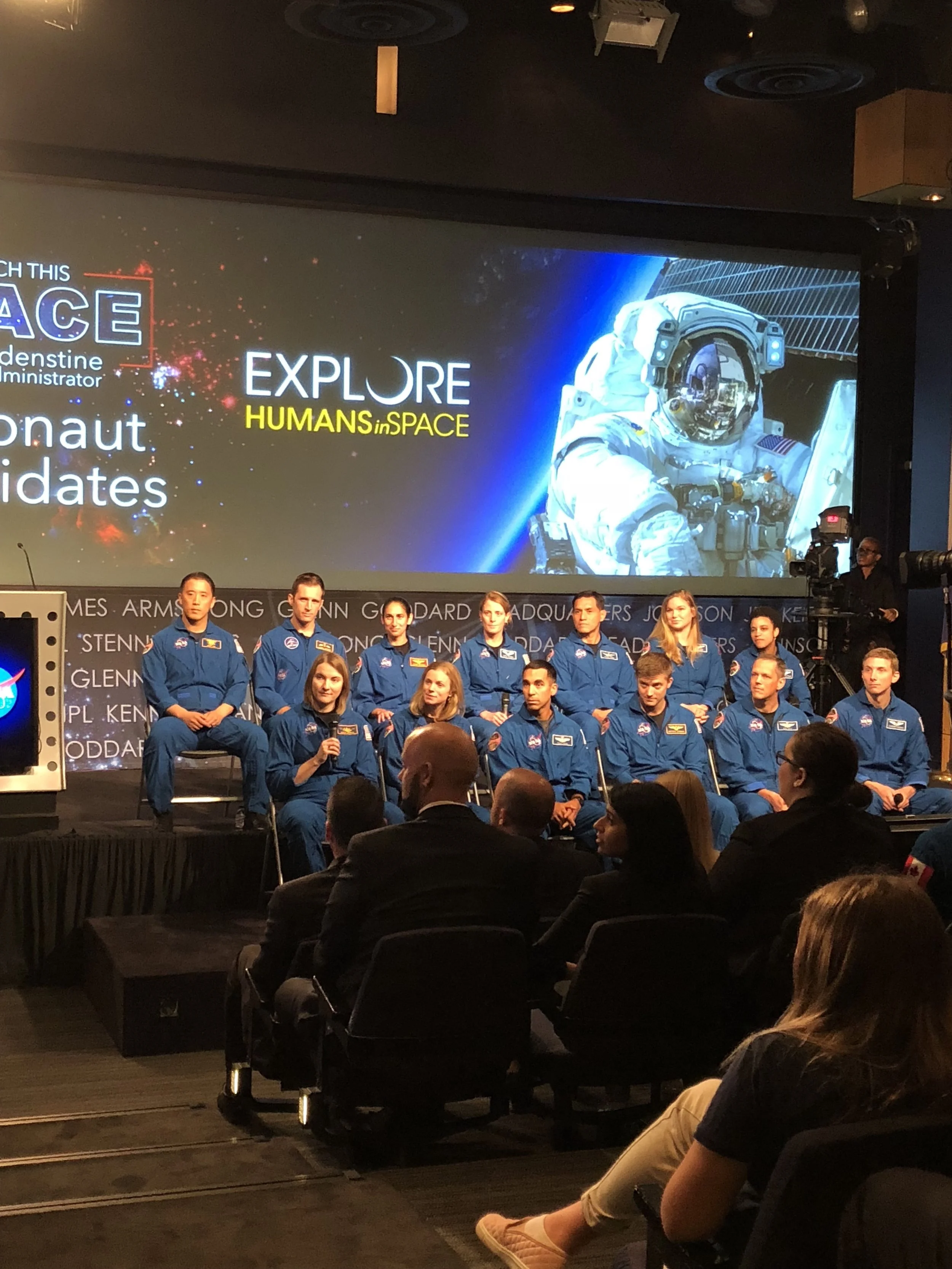NASA's on a Roll...
So, I work at NASA Headquarters—something that I still don’t quite believe. I’ve had a chance to participate in one way or another in all the exciting events that have happened over the past few weeks, so I thought I’d talk about it a bit.
I already mentioned in this post that I got a chance to see the new astronaut class when they came to HQ, which was really fun. I also got a chance to see some of the scientists involved in the InSight Program a few weeks ago when they came to headquarters. They did a press event on the InSight Mission and headquarters staff and their friends and family were invited. Naturally, I invited my Einstein Family, and a few of them were able to come. There was also some middle school students who came to the event, which was really cool, for reasons I’ll talk about later in this post. The whole event was filmed and broadcasted on NASA TV, and I made another appearance in the audience. That’s also pretty cool! :) Pascale, (a fellow fellow), even got to ask a question during the Q/A. She asked a great question about how the science they were planning for the InSight Mission could be used here on earth with students. The scientists mentioned this really great program, called Seismographs in Schools, where you can access seismic data collected by seismographs in classrooms around the world for use in the classroom. They said that InSight “Marsquakes” data will be included in the publicly accessible data as well. Here’s a blurb from their website:
IRIS is an Educational Partner on the InSight Mission, with the goal of engaging students with seismic data from Mars. Working with the IRIS Data Managment Center, IRIS Education and Public Outreach expect data from the seismometer to be available in the spring of 2019 to students and the public! Classrooms will be able to stream Martian seismic data, allowing students to watch for marsquakes and meteorite impacts with us! Learn more about the mission on NASA's InSight page.
How cool is that?
Continuing with InSight, headquarters employees and friends/family were invited to the auditorium to watch the landing live on Monday, November 28th. There were a lot of people there, which was fantastic. Several Einstein Fellows and I watched the live NASA TV special on the big screen in the auditorium. There were also people from the Science Mission Directorate on hand to lend a bit of commentary and answer questions. At HQ, there was a similar sense of tension as what we saw at JPL. A huge cheer went up when InSight passed each critical milestone and when the lander reached the surface (but no cool handshakes). Overall, it was an awesome experience.
The last event was, unbelievably, only two days later. On Wednesday, our administrator, Jim Bridenstine, and the head of the Science Mission Directorate, (SMD), Dr. Thomas Zurbuchen, announced the partnerships for our Moon Missions. That happened at headquarters, and press and HQ staff were invited to attend along with a few local FIRST Lego League Teams. The event was broadcast live on NASA TV (I was on TV again)! My favorite part of the event was that a FIRST Lego Team did a live demo of the robot missions which focus on space-related tasks this year. Another cool thing about the event was how excited everyone was that SMD was going to have such a big role in the next moon missions. In other words, we’re not just going to the moon to go to the moon—we’re going to the moon to do science! Of course, I approve.
Something that I’ve noticed over the past few events is that NASA is making an effort to invite students from local schools/colleges/teams. They are usually DC schools, and it’s great to see them reach out to local pubic schools who, generally, serve more diverse kids. If we want to see more underserved students go into STEM, then students need to see themselves as scientists and this is part of how we do that.
To expand on that last statement a bit, I believe there are three important tentpoles under the “seeing themselves as scientists” tent. First, students need to interact with diverse scientists who look like they do in order to hear about their successes and their struggles. Second, students need to visit the places where STEM happens so that they can imagine themselves there some day. Third, they need to be doing science in the classroom that is relevant, rewarding, and that mimics the real conditions that scientists work in—every day, every way that we can. So I’m glad that NASA is getting on board with inviting students in. It’s crucial.
Here are some photos from the various events. As usual, click to read more about the photo and see a larger version.














